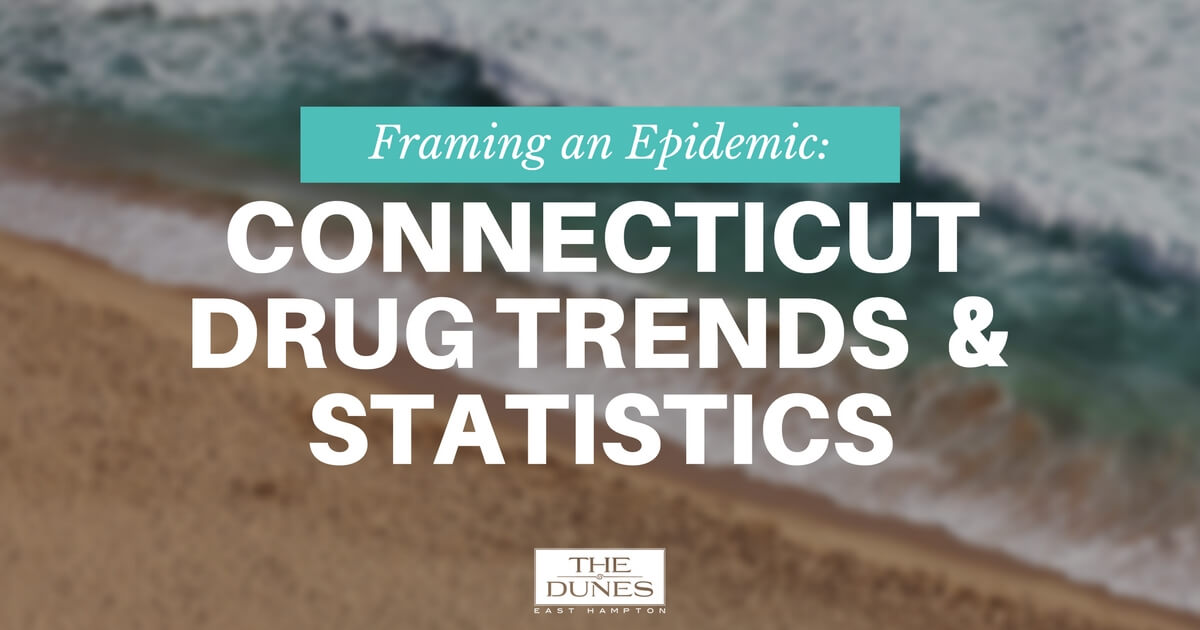Drug use in Connecticut poses a compelling threat to public health. According to the National Survey on Drug Use, Connecticut ranks in the top 10 for dependence on illicit drugs for adults aged 18 to 25. Drug-related incidents claim more lives than motor vehicle accidents or incidents involving firearms. Opioids remain a primary concern, with heroin being the most commonly cited reason for treatment admissions in the Nutmeg State. Local and federal officials are committed to addressing the opioid epidemic, but public awareness plays a role in adopting legislation to curb the incidence and prevalence of drug overdose and drug-related death.
Framing The Problem: Connecticut’s Drug Epidemic
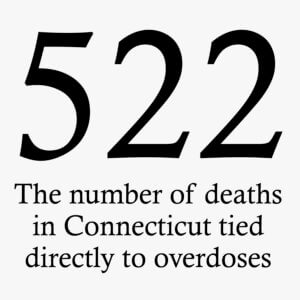
Opioid use doesn’t discriminate by age or gender; victims in 2015 were aged from 17 to 72. Since opioids can be addictive after a single use, public health officials are working hard to address the root of the epidemic, which can be traced to prescription drug behavior and trafficking.
A National Epidemic: How Does Connecticut Compare?
The opioid epidemic isn’t exclusive to Connecticut. Across the country, states are feeling pressure from drug-related deaths. The Centers for Disease Control and Prevention estimates that more than half a million American died of drug overdose between 2000 and 2014. Connecticut has surpassed the national average for drug-related deaths since 2013, experiencing a 76% increase from 1999 to 2013 according to the Connecticut Department of Public Health.
The past five years have seen deaths related to opioid overdose soar. Drug-induced death is currently the leading cause of injury-related death in Connecticut.
Roots In Prescription Drugs
In 2001, the Joint Commission on the Accreditation of Health Care Systems designated pain as the fifth vital sign, requiring hospitals to obtain a subjective measure of perceived pain on a scale of 1-10. Pain management became a metric for evaluating hospital quality, leading doctors to prescribe narcotics – namely opioids – to their patients. Prescribing behavior is directly related to the current drug epidemic, with patients suffering from chronic pain turning to other forms of relief when their prescriptions run out.
A Lack Of Training?
According to Dr. Daniel Tobin, assistant professor of medicine at Yale University, 80% of opioid prescribers are primary care physicians, not pain specialists. Pain specialists are scarce; there’s an estimated four experts for every 100,000 patients in pain.
The lack of training begins in medical school. According to a 2011 study of 133 medical schools, only five had mandated course that specifically addressed treating pain. Another 17 offered it as an elective.
Tobin notes that there’s no sustainable way to provide total pain relief. Tolerance develops and physicians increase the dosage, leading to an increased risk of dependence.
An Oversupply Of Opioids
Overprescribing behavior has led to an increase in the number of opioids available for public use. Data shows that most people who use opioids for non-medical reasons don’t obtain the drugs from a physician prescription but from a family member or friend. This is a typical scenario: Following a medical procedure, a physician writes a prescription for an opioid good for a couple of weeks, but recovery only takes a few days. The extras remain in the medicine cabinet, where they may be stolen or given away freely to someone dependent on opioids.
Opioids Vs. Opiates
An opioid is a synthetic opiate. Drugs like:
- Fentanyl
- Oxycodone
- Methadone
- Hydrocodone
- Hydromorphone
Opiates, by contrast, are naturally occurring compounds like:
- Morphine
- Codeine
Heroin is a semisynthetic opioid. Both opiates and opioids are considered drugs of high abuse potential.
Transitioning To Illicit Drugs
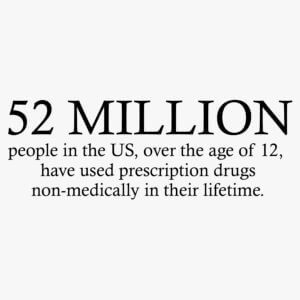
Law enforcement officials also report an increase in the availability of illegally manufactured fentanyl. Drug dealers have taken to cutting heroin with this synthetic substance to increase its potency.
Between 2014 and 2015, reports of fentanyl in the bloodstream of an overdose victim increased by 150%. Last year, fentanyl played a role in a quarter of all drug overdoses.
According to a DEA spokesman, fentanyl is 50 to 100 times more potent than morphine and 30 to 50 times more potent than heroin. Most illegally manufactured fentanyl that makes its way to the streets of Connecticut is made in Mexico.
Who Is Most Affected By Opioid Abuse?
Race And Ethnicity
Opioid dependence affects people from all walks of life – from teenagers to the elderly. Certain demographics, however, are more prone to opioid dependency than others. Overall, Caucasians are more likely to die of a drug overdose, and that holds true for opioid-related overdose too. That racial disparity is increasing, according to recent reports.
State data of 1,912 overdose deaths in Connecticut between 2012 and 2015 found that Caucasians had a higher rate of death by drug overdose, at 6.2 of 10,000 residents. By contrast, African Americans and Hispanics had 4.1 and 4 deaths per 10,000 residents, respectively. Dr. Daniel Tobin of Yale University cited affluence as a potential risk factor for opioid abuse, since the drugs are easier to come by.
Age
Drug overdose affects all ages, but 56% of opioid overdose victims were over the age of 40. Deaths are fairly evenly distributed between 20 and 60 years old.
Tobin points out that overdose potential may increase as we age because of the medicines we accumulate in our cabinets. There’s no statistically significant trend for death by age group, indicating that all are vulnerable.
The types of drugs that cause overdose vary significantly by age. In overdose deaths between 2012 and 2015, heroin was most often found in the bloodstream of those between the ages of 21 and 45. For ages 46 to 60, hydrocodone, hydromorphone, and oxycodone were the likely culprits.
Socio-Economic Status
Data from the state medical examiner’s office suggests that there are significant trends for overdose and death by socioeconomic status. While overdoses affect people across all socioeconomic groups, those in urban areas are more likely to overdose from heroin, while those residing in more affluent suburbs are more likely to overdose from a combination of prescription pills and heroin.
Where Do Overdose Deaths Occur The Most?
Contrary to popular belief, people in urban and rural areas are affected by opioid and other drug-related overdoses. While cities claim the most drug-related overdose deaths, those living in rural areas are statistically more likely to die.
In Connecticut,
- Hartford
- Newbury
- New Haven
have consistently been the towns with the most overdose deaths since 2012.
Rural, Suburban, And Urban Community Differences
The median death rate for rural towns overtakes those in suburban and urban areas. Those in rural communities live further from emergency medical facilities. While urban areas have more overdose deaths, there’s no marked difference in median death rate between suburban and urban areas.
Town Median Income
Towns with lower median incomes carry higher death rates from drug overdose death. When the median income was less than $66,000, the adjusted death rate was an average of 7.2 per 10,000 residents between 2012 and 2015. In municipalities with an income over $90,000, the death rate was only 2.3.
Common Places Of Overdose
People overwhelmingly overdose in their own residences – 70% of all drug overdose injuries between 2012 and 2015 occurred in a residence. More than half of all drug overdose–related victims (51%) were also discovered in a residence.
Connecticut Communities In Crisis
Heroin In Suburban Communities
Heroin now poses a threat to suburban areas of Connecticut as well as urban ones. Because of its location between Boston and New York City, Connecticut is a large transit and destination area for drugs. Data suggests that 26% of all out-of-town overdose death comes from New York City, and 11% of out-of-towners who overdose in Connecticut are from Massachusetts.
How It’s Getting There
Interstate 95 is an especially convenient roadway for drug traffickers. It connects New York City to Boston and also provides access to the US-Canadian border. Communities along the I-95 border, New Haven, Stamford, Bridgeport, and New London are vulnerable to drug trafficking operations. Interstate 91 runs north through New Haven into Massachusetts and Vermont into Canada. These two interstates make up what law enforcement officials refer to as the New England Pipeline.
Changing Dangers
DEA laboratories report that heroin is being sold at 70-80% purity levels, though the rate at which heroin is being cut with more potent substances like fentanyl is markedly increasing. Anecdotal evidence from law enforcement officers suggests that these more potent drugs can cause overdose even before a victim pulls the needle from the vein.
While heroin overdose deaths increased 36% from 2014 to 2015, those related to fentanyl jumped an astounding 165%. As regulations on prescribing opioids have tightened, individuals have turned to heroin laced with fentanyl because it’s cheaper and easier to come by.
High Intensity Drug Trafficking Areas
The Office of National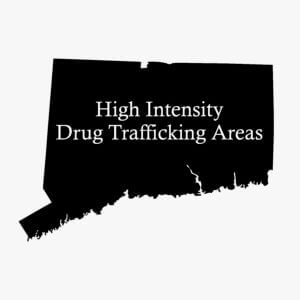
Connecticut is part of the New England HIDTA, encompassing Fairfield, New Haven, and Hartford Counties. The New England HIDTA is committed to dismantling drug trafficking efforts that mar the area by connecting a series of task forces throughout the region.
Other Drugs Of Abuse: Where Does Connecticut Stand?
While the opioid epidemic is a major concern, it’s not the only abused drug that plagues Connecticut. Overall, an average of 8.23% of residents report using illicit drugs in a given month, compared to the national average of 8.02%.
Marijuana
According to 2010 data, marijuana is the second leading cause for primary drug abuse treatment admissions. Marijuana is a widely accessible drug available in all areas of Connecticut. Commercial-grade marijuana generally comes from Mexico and the Southwestern US. According to DEA data, most marijuana comes from Jamaican trafficking groups.
Additionally, Caucasian criminal groups distribute high-quality marijuana from across the Canadian border. Hydroponic marijuana has increased in popularity as the technology becomes more readily available. Marijuana in Connecticut can be sold for as much as $5,000 per pound.
According to DEA figures, federal authorities seized 20.89 kgs (45.9 lbs) of marijuana in 2004.
Cocaine
Though heroin and other opioids have surpassed cocaine as Connecticut’s most popular drug, it’s still a widely abused drug. Crack is abused over powder. Columbian suppliers bring cocaine hydrochloride into the area using Jamaican traffickers, generally from New York City.
In 2004, officials seized 23.8 kgs (52.5 lbs) of cocaine.
Cocaine-related overdose deaths have remained fairly steady in recent years. In 2012, there were 105 overdose deaths. In 2015, there were 176, according to Chief Medical Examiner records.
Club Drugs
Ecstasy is widely available in Connecticut and is an abused drug, particularly among teenagers and college students. MDMA, also known as Ecstasy, is distributed at nightclubs and increasingly on college campuses. Most criminal groups bring MDMA into the state from Canada, where it’s sold for $20-$30 per unit. In 2004, the DEA seized 49 tablets.
Other Drugs
Drugs like PCP and methamphetamines aren’t as highly abused, but they still pose a health threat. PCP is generally sprayed on mint leaves and smoked. Connecticut PCP is trafficked via courier from New York City.
Methamphetamine laboratories are uncommon in the area. However, there was a lab closure in 2002.
Alcohol
Though legal, alcohol is still an abused drug. Deaths and injuries related to alcohol use have risen sharply since 2013. Alcohol-induced death saw a 58% increase between 2009 and 2013, while alcohol-dependence syndrome increasing 108%. Liver cancer increased by 68%, according to the Connecticut Department of Public Health.
Drug-Related Consequences
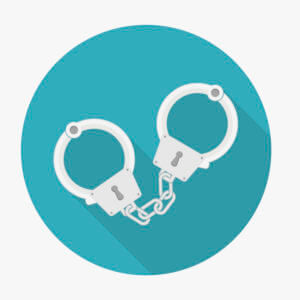
In 2000, the DEA made 608 drug violation arrests. The organization uses its Mobile Enforcement Team (MET) program to respond to drug operations and related violent crimes. From 1995 to 2004, MET deployed 436 operations and made 18,318 arrests nationwide. In Connecticut, METs have been deployed in Hartford and Bridgeport.
A Note About Drugged Driving
Operating a vehicle under the influence of an opioid or any other illicit drug can have disastrous consequences. The National Highway Traffic Safety Administration found that an average of 1 in 8 weekend nighttime drivers tested positive for some sort of illicit drug. According to the Fatal Accident Reporting System, 33% of motor vehicle fatalities tested positive for drugs (based on 2009 data). To address this threat to public health, the ONDCP provides increased training to law enforcement officers in identifying and apprehending drugged drivers.
Per Se Laws
Every state in the union has statutes that prohibit drugged driving, but law enforcement and justice officials often lack the funding to enforce and prosecute these offenses. The United States uses “per se” standards for over 12 million commercial drivers, which state that anyone who has a designated amount of an illicit substance in their system is guilty of DWI “per se.”
While the federal government encourages states to enact such standards, Connecticut has yet to do so. According to Connecticut law, no person is allowed to operate a motor vehicle under the influence of any drug. The penalty carries up to six months of imprisonment for a first offense and $500-$1,000 fines.
What Are Officials Doing About It?
Equipping Law Enforcement With Naloxone
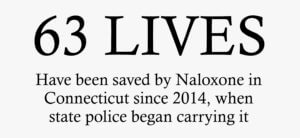
Naloxone is an opioid overdose drug that state police have carried since 2014. It’s credited with saving 63 lives, according to state officials. It works by stopping the respiratory depression that can occur with overdose.
Legislators in 2014 passed a law that promised immunity to anyone who administered naloxone to someone who was overdosing. Local community police forces are expected to receive training for naloxone administration, which can provide life-prolonging treatment until an overdose victim can receive appropriate medical care.
Other Naloxone Legislation
A bill that the House and Senate recently passed takes naloxone a step further and allows pharmacists to prescribe the drug and train everyday citizens how to use it. The law will greatly improve the availability of this life-saving drug. Proponents say the law provides immediate means to save lives, and it’s not without precedent: several other states have passed similar measures.
Connecticut also approved a “Good Samaritan” law that pardons minor drug offenders if they seek help for someone else who’s overdosing.
Addressing The Prescription Drug Epidemic
Connecticut has adopted a national framework (“Epidemic: Responding to America’s Prescription Drug Crisis”) to reduce prescription drug abuse and its adverse consequences. It has a four-point emphasis to: provide education for providers and patients; responsibly dispose of unneeded and extra medications; create Prescription Drug Monitoring Programs (PDMPs); and increase enforcement efforts.
Educating Patients And Providers
Federal authorities are implementing coordinated efforts to educate the public and providers about the opioid problem. The CDC recently published new guidelines that aid primary care practitioners in prescribing narcotics for chronic pain management. President Obama also announced a $1.1 billion increase in funding for projects that address opioid dependence, including improving access to quality treatment options.
Disposing Of Unwanted Medications
Connecticut works with the DEA creating drug take-back programs in an effort to get narcotics out of medicine cabinets – away from where they can be distributed to dependent users. Legislation to create federal drug take-back programs is underway.
Prescription Drug Monitoring Programs
PDMPs track Schedule II-IV drugs that practitioners prescribe and local pharmacies dispense. These programs exist to assess early warning signs of abuse and curb efforts to participate in drug diversion and insurance fraud. Forty-nine states currently have PDMPs in operation with the help of federal and state funds. Connecticut, however, is one of only nine states that mandate the use of a PDMP. Under Connecticut law, all transactions involving Schedule II-IV drugs must be recorded in its system.
Moving Forward: The Future Of Reframing The Epidemic
Addressing the prescription pill epidemic by mandating drug monitoring programs and shutting down “pill mills” is important, but it’s only once piece of a much larger puzzle. While prescription pill abuse is declining, heroin and fentanyl abuse are replacing it. Legislators must double down on law enforcement efforts to curb illicit drug trafficking across the New England pipeline.
The Future Of Treatment
Treatment centers also face budgetary constraints. The Department of Mental Health and Addiction Services, which provides a valuable safety net to current and recovery addicts, predicts that it will have to slash its budget by $34 million, reducing its overall number of treatment beds.
This is in stark contrast to the number of people who need access to services. The department has seen a 150% increase in individuals seeking addiction treatment services. Departments all over Connecticut are looking for creative ways to increase access to life-saving services.
Needle exchange organizations that provide naloxone report that they often run out and don’t have the budget to buy more. The Department of Public Health Commissioner says he is committed to getting naloxone to these organizations, even in the face of budget cuts.
Making Life-Saving Services A Priority
Connecticut may have to adopt more creative ways to increase access to naloxone. Some states pay for it by taking 10% of civil forfeitures related to drug offenses, while California is considering taxing pharmaceutical companies to help pay for a statewide supply.
While this may reduce the number of heroin and opioid-related deaths, it doesn’t cure addiction. The state should also make treatment and preventive strategies a priority.
A Multi-Faceted Process
For every drug-overdose death, there are several other injuries and near-misses. Effectively addressing the problem requires equal attention to treatment, prevention, and recovery.
Preventive Measures
Connecticut supports a number of community-based prevention initiatives. In 2011, 17 coalitions received federal funding from ONDCP to continue their efforts in reducing drug use and its associated consequences.
Available Grants
Each fiscal year, the federal government gives competitive grants to help states further their efforts to curb the negative effect of drug abuse. In 2010, Connecticut received several grants to reduce drug abuse and its consequences, including:
- Preventing and Reducing Alcohol Abuse at Institutions of Higher Education: $375,000
- HIV Prevention Activities: $240,000
- Drug Abuse and Addiction Research Programs: $37,397,275
- Grants Related to Substance Abuse and Mental Health Services: $33,299,147
- Employment and Training Opportunities for Recovering Addicts: $500,000
- Drug-Free Communities Program Grants: $2,071,156
- Enforcing Underage Drinking Laws: $356,400
In total, Connecticut received $103,493,029 in federal funding to aid dozens of state and local drug-related prevention initiatives.
The National Anti-Drug Media Campaign
This federal initiative works directly with local groups to spread the message about the dangers of illicit drug use to youth. The campaign, Above The Influence, disseminates this message through local and national advertising vehicles.
Treatment Centers
Effective rehabilitation is essential to addressing the drug epidemic. According to federal data, there are nine addiction treatment centers in Connecticut that provide inpatient and outpatient care for those struggling with drug abuse and addiction.
Drug abuse and its consequences continue to be a threat to the health of the citizens of Connecticut. Heroin and other opioids lead the charge in prevalence of overdose-related injury and death, though cocaine levels have remained steady. Heroin is the leading cause of primary admissions to local treatment centers. Government entities are feeling the pressure of limited funding to control the epidemic and rehabilitate those struggling with addiction.
Access to naloxone is an important step in reducing the number of heroin and opioid-related deaths, but it’s only a short-term solution. True change happens at the treatment and prevention levels. The federal government offers grants to organizations at the state and local levels for their efforts to educate and prevent drug abuse and adverse consequences. HIDTA designations allow law enforcement to more effectively stop drug-related activity and associated violent crime.
Effective treatment options for those struggling with addiction continues to be an important piece in the drug epidemic puzzle.


